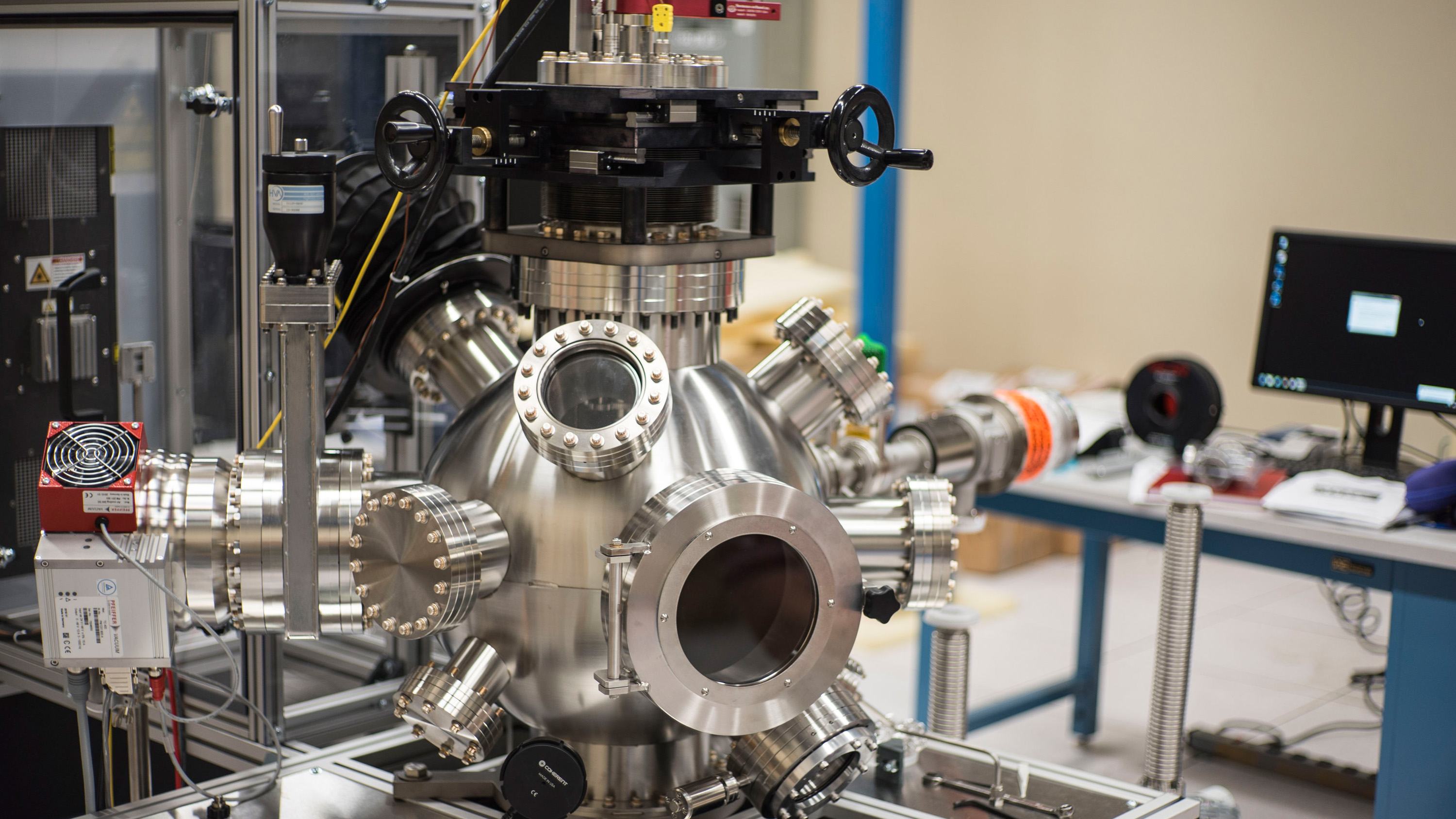
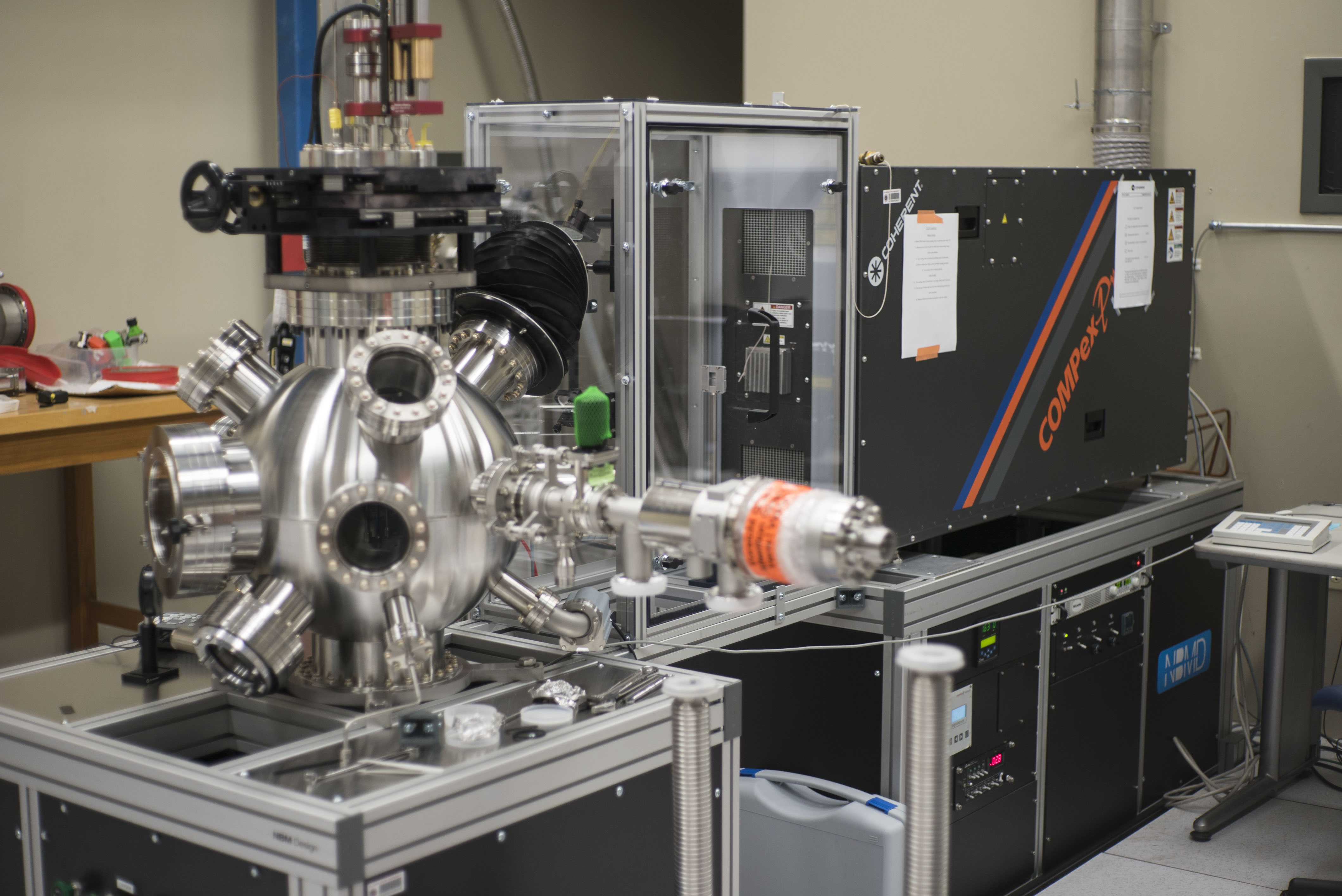

We use Pulsed Laser Deposition (PLD) as a physical vapor technique to grow high quality complex oxide thin films with various substrates. This process works by precisely firing short, intense laser pulses at a target material which forms a plasma plume and allows the materials to be deposited homogeneously with a substrate positioned above the target. Research involving this technique is relatively modern and thus our progress exists at the frontier of what is known about thin film ferroelectrics and superconductive materials. We use a KrF excimer laser that allows us to grow thin films on 5x5 millimeter size substrates. We have the capability to grow two of these thin films at a time, with a maximum of six target materials in the chamber.
We use Pulsed Laser Deposition (PLD) as a physical vapor technique to grow high quality complex oxide thin films with various substrates. This process works by precisely firing short, intense laser pulses at a target material which forms a plasma plume and allows the materials to be deposited homogeneously with a substrate positioned above the target. Research involving this technique is relatively modern and thus our progress exists at the frontier of what is known about thin film ferroelectrics and superconductive materials. We use a KrF excimer laser that allows us to grow thin films on 5x5 millimeter size substrates. We have the capability to grow two of these thin films at a time, with a maximum of six target materials in the chamber.
We use Pulsed Laser Deposition (PLD) as a physical vapor technique to grow high quality complex oxide thin films with various substrates. This process works by precisely firing short, intense laser pulses at a target material which forms a plasma plume and allows the materials to be deposited homogeneously with a substrate positioned above the target. Research involving this technique is relatively modern and thus our progress exists at the frontier of what is known about thin film ferroelectrics and superconductive materials. We use a KrF excimer laser that allows us to grow thin films on 5x5 millimeter size substrates. We have the capability to grow two of these thin films at a time, with a maximum of six target materials in the chamber.
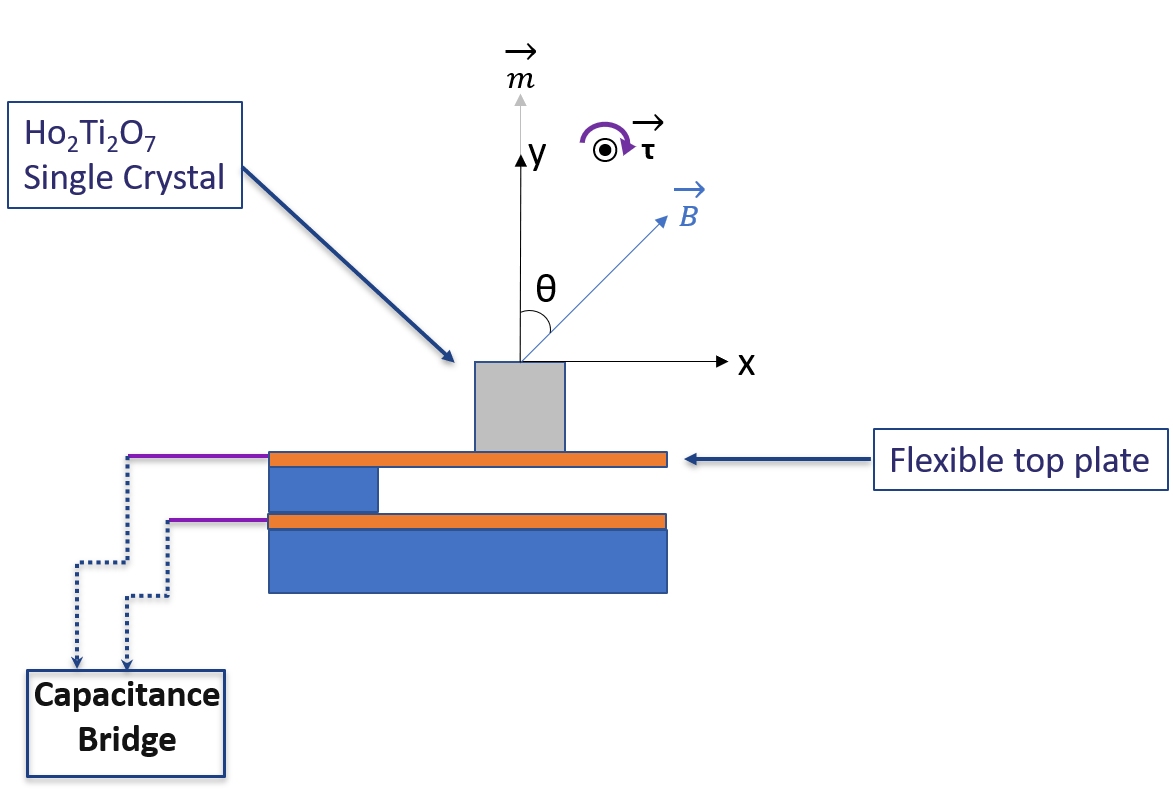
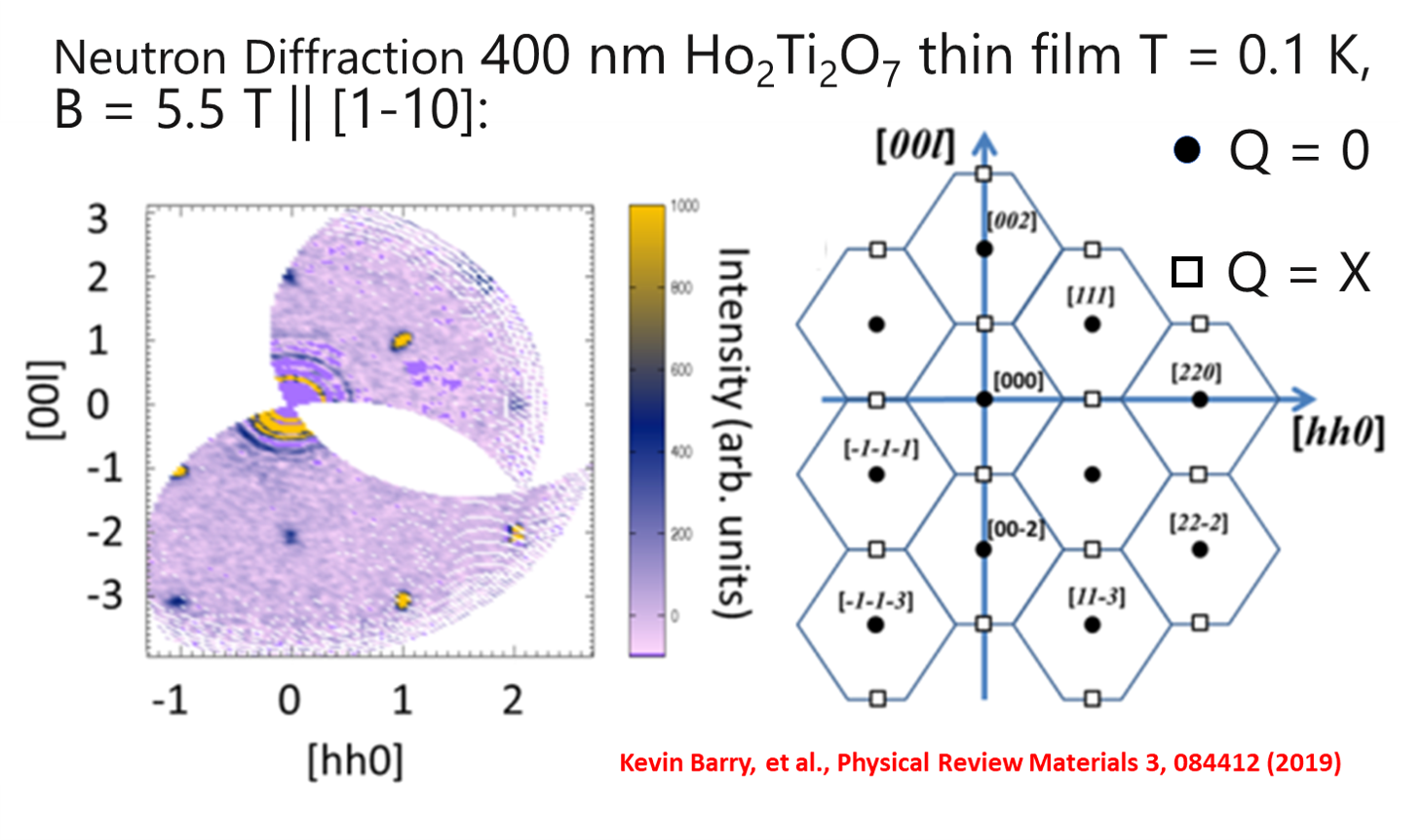
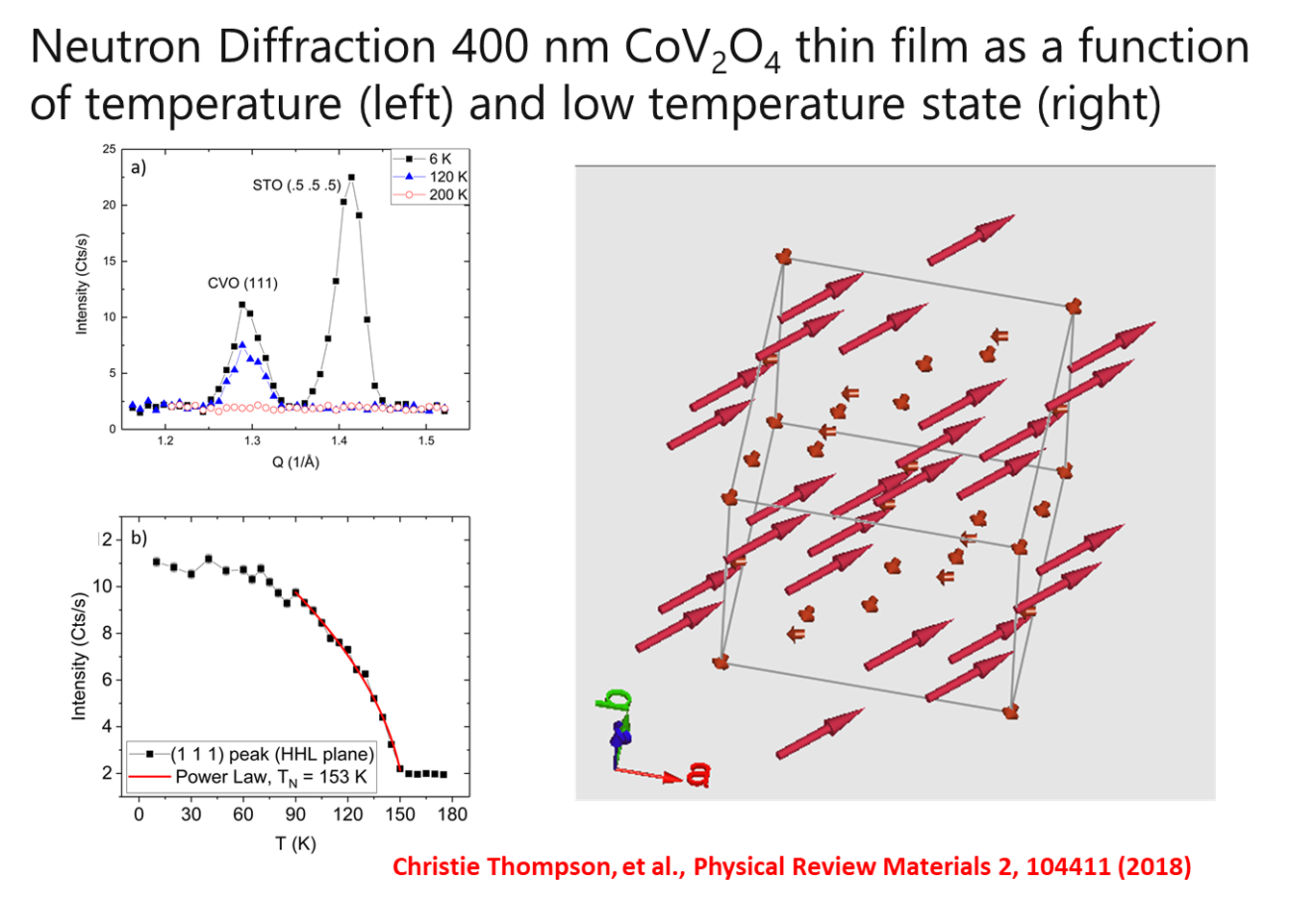
Neutron Diffraction is performed on pyrochlore titanate and spinel vanadate thin films so that the emergence of novel noncollinear spin textures can be investigated in strained versions of these quantum materials. Neutrons can be used to probe the structure as well as the ordering of the magnetic moments on the lattice. Modeling of the diffrraction peak intensities as a function of temperature and applied magnetic field allows characterization of the net magnetic moment sizes and directions that reeside on the magnetic sublattices of the material under investigation.
Neutron Diffraction is performed on pyrochlore titanate and spinel vanadate thin films so that the emergence of novel noncollinear spin textures can be investigated in strained versions of these quantum materials. Neutrons can be used to probe the structure as well as the ordering of the magnetic moments on the lattice. Modeling of the diffrraction peak intensities as a function of temperature and applied magnetic field allows characterization of the net magnetic moment sizes and directions that reeside on the magnetic sublattices of the material under investigation.